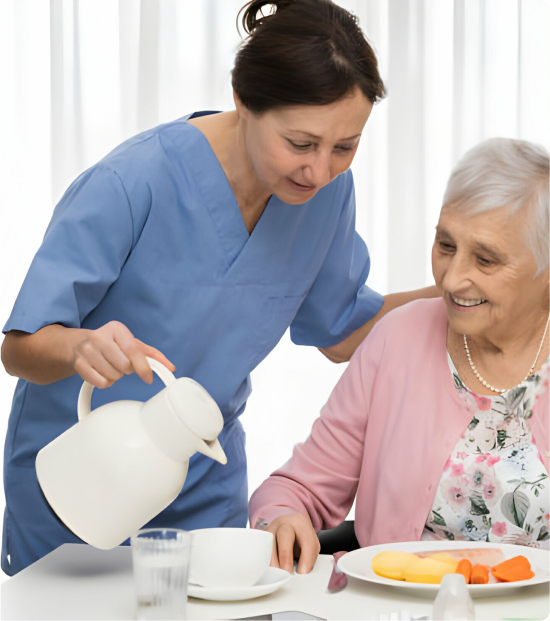Mount St. Mary’s men’s basketball senior Arlandus Keyes recently chatted with PressBox about playing in the NCAA Tournament in March, why the JUCO route was so beneficial for him and more. The 6-foot-2, 173-pound guard averaged 6.8 points and 3.3 rebounds per game while shooting 36.1 percent from 3-point range for the Mountaineers in 2024-25. Keyes is a native of Florissant, Mo.
PressBox: How did you first become interested in basketball?
Arlandus Keyes: My cousins, I hooped with them a lot growing up. My mom, [Tiffany], didn’t really want me in sports, but I got into it later. Once I started playing for an organized team, I kind of fell in love with the game. … Low-key I was always in trouble. Basketball was really just my main source of staying out of trouble. If I want to play basketball, I’ve got to have good grades and do the right things.
PB: Who was the biggest influence on your game growing up?
AK: I would probably say my brother and my closest friend, [Missouri State forward Darrion Sutton]. Me and him played basketball a lot together growing up. Just playing in the park to playing organized together and us separating to going our separate ways from high school, I feel like we just always [were] dedicated to being in the gym together and helping each other get better.
PB: Why did you initially choose to go to Ellsworth Community College in Iowa?
AK: I chose the JUCO route because low-key it was the best option for me at the time. I didn’t really know JUCO, but my mentor basically told me that it would be the best fit for me right now because I was homeschooled and I didn’t have any good schools reaching out to me. It was really just good JUCOs, so I just ended up going the JUCO route.
PB: Why did you choose to go to the Mount?
AK: I chose to go to the Mount because when I came on my visit up here, it just felt like home already. The coaches are great. Of course, it’s a new coaching staff. Of course, it’s a new culture of getting away from JUCO and being part of a bigger program. I just felt like the love was genuine when I first got here and everything just went great.
PB: What’s your favorite thing about the Mount?
AK: I would say the people. I feel like I can talk to anyone, whether it’s the president, athletic director, anybody. I can be myself, if that makes sense.
PB: What was it like to beat American University in the First Four of the NCAA Tournament in March?
AK: That was great. My teammates were really happy last year, us making it that far. I feel like we were getting doubted the whole season. We had an up-and-down season, but we all had the same, common goal, which was winning. We ended up winning. It was just all smiles after that. We just all wanted to help each other out in any way possible. It was just all smiles. No one was mad at each other. We’re happy to be there.
PB: Was it a learning experience playing Duke in the first round?
AK: Very big learning experience, but it also gave me a lot of confidence. It was a learning experience because the majority of those guys went to the NBA. Me looking back a couple years ago when I was getting recruited out of high school, I didn’t even think I would be in that situation. Therefore, playing against those top guys was just a great experience. I wasn’t learning from them, but [there are] of course a couple things. They’re always talking and [doing] the little things.
PB: Who is your best friend on the team and what’s a story that underscores your friendship?
AK: [Anthony Arrington]. He’s a transfer guard. He came from Wofford. Me and him get along. We’ve kind of got the same goal, which is winning. We play the same position, but I feel like we have the same mindset of we don’t really care who starts, we don’t really care who scores the ball. We just want to win.
PB: What advice would you give to younger players looking to play in college?
AK: Don’t always look for the option of just wanting to go D-I straight [out of high school]. If it’s a D-II college or anything, look into it. JUCO really changed my life. I would say JUCO is a good start for people getting into the college basketball life.
PB: Why can the JUCO route be a positive step for a player’s development?
AK: I feel like the JUCO route is good for people struggling in school. Or say you were a bench player in high school and you went JUCO, it’s your decision on whether you want to get better or not. You’re sharing dorms with your teammates. You’ve got to get along with your teammates. Your parents are not there. You’re in a small community where it’s literally just basketball and school, small town and all of that. I just feel like it can really change your perspective and make you grow up faster mentally — fighting adversity with basketball. JUCO is just grit and grind. There’s nothing else to it.
PB: What is it like being recruited from the JUCO ranks?
AK: I would say it’s basically like getting recruited out of high school, except you’re going against some of the players that were good enough to go D-I but their grades were really, really bad. Or maybe they’re just finding a love of basketball and they just want to explore how far they can go. The JUCO I went to, I would say it was really great because [head coach Bryan Bender’s] main focus was getting us to the next level.
PB: What are your goals for after basketball, whenever it ends?
AK: I’m really into basketball, so I feel like the ball will never stop dribbling for me unless I get really, really old. I feel like I have a really good resume from going to March Madness last year, being in the [NJCAA Division II] Final Four. Back home, I would really love to help little kids, encourage them and stuff like that. I feel like I would have something to do with teaching little kids the game — not just about the basketball going in the hoop but mentally.
Photo Credit: Courtesy of Mount St. Mary’s Athletics
Originally published Oct. 15, 2025

 574-232-8487
574-232-8487




 Service Areas
Service Areas























